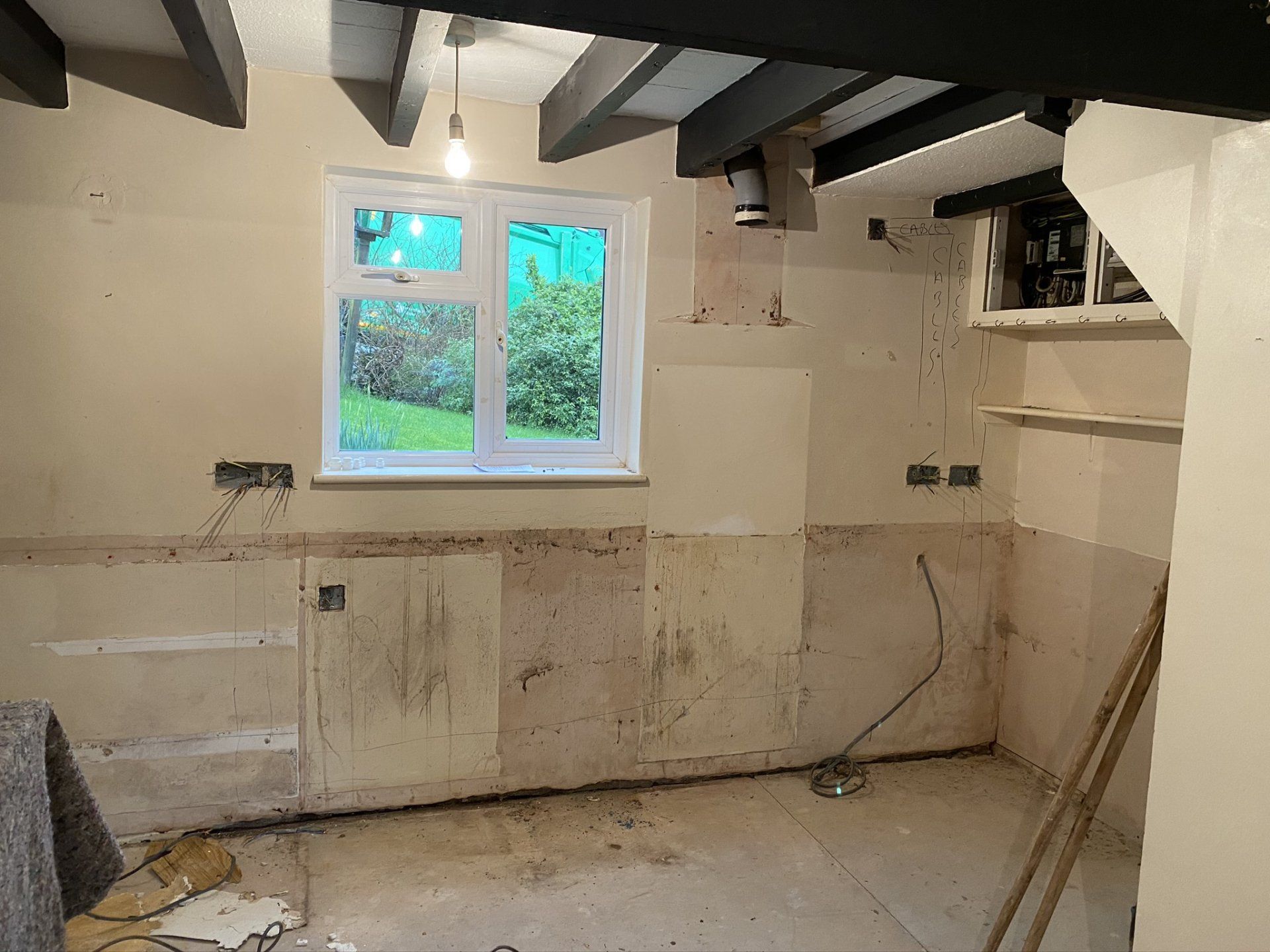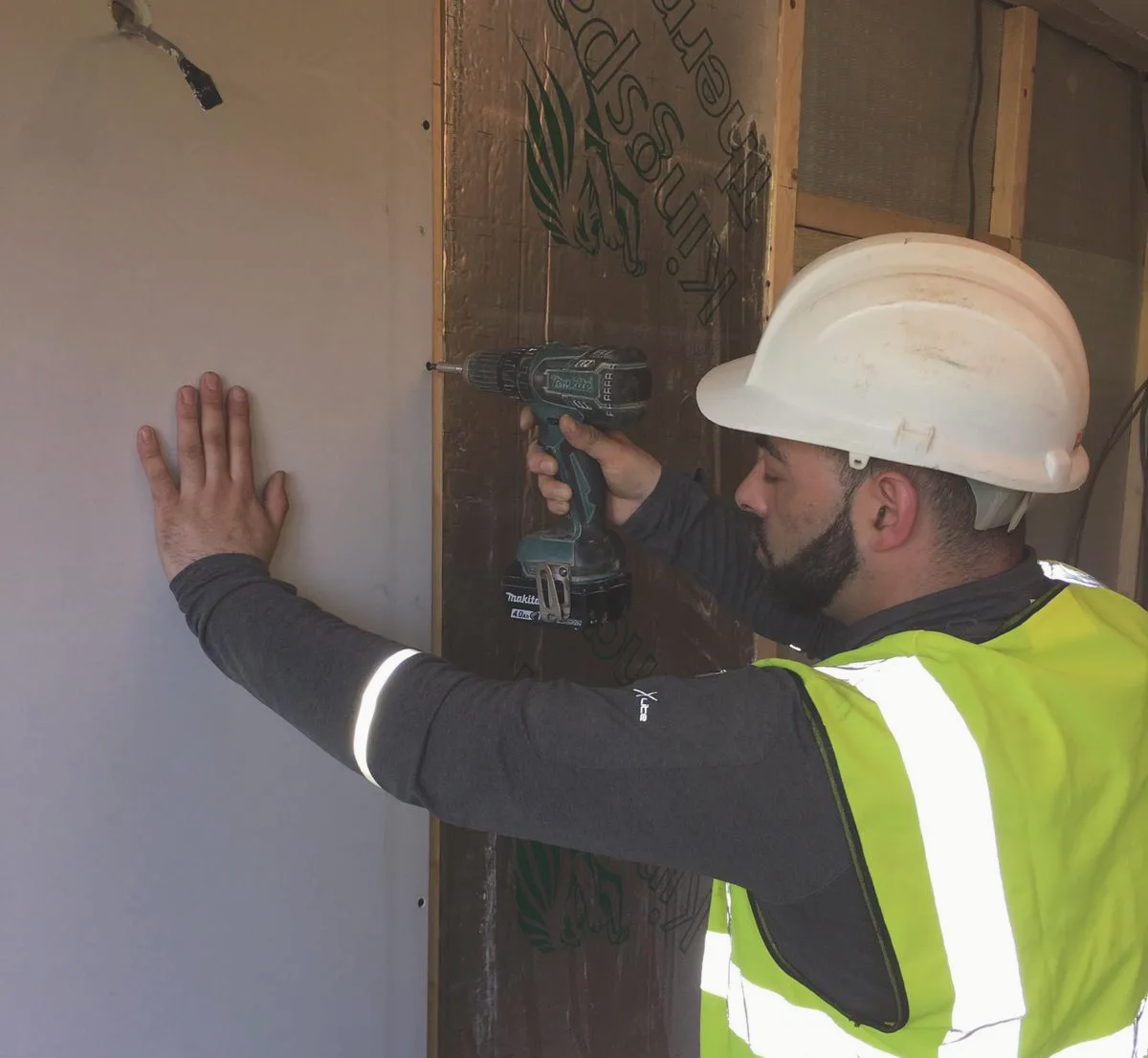Rising Damp
Rising Damp Solutions in Herefordshire
When it comes to rising damp treatment, here at Wye Valley Heritage we offer a number of courses to suit your needs. Systems like the ones we provide are considered to be an effective alternative to most conventional damp proofing methods such as chemical damp proof courses (DPCs), cementitious and bituminous paint on coatings and external water repellents. We offer a number of courses, but we can advise you on the spot which will be the best suited to your problem as our experts are fully qualified to deal with any issues you have. Our systems generally require minimal preparation, are quick to install, and are considered to be most sympathetic to the structure.
When an injected damp proof course is used in damp walls where rising damp treatment is needed, part of the process almost always includes hacking off existing plaster which is an extremely disruptive and messy process. Drilling and injecting the chemical DPC is an exact science in that the holes have to be drilled to the right diameter, at the right spacing and to the correct depth if the installation it to be effective. The exact gauge of DPC cream or fluid in relation to the thickness of the wall and what it is built from need to be calculated and used to achieve totally effective diffusion into the substrate which is especially tricky in buildings constructed of varied materials or poorly built structures where there are large fissures and voids. No guesswork is required and the membranes are offered up to the walls, drilled and fixed quickly and cleanly the same way to almost any substrate. The damp-proofing membranes provide an impervious barrier to protect the internal finishes which require rising damp treatment, without changing the status quo of the wall.
If a DPC fluid is used then the active ingredient is mixed with water as the carrier and so you are effectively introducing more fluid into an already damp wall thus making it wetter! Any organic material like timber (skirting boards, door linings, architraves, fixing blocks etc.) in contact with the damp wall means there is a risk that wood rotting fungi like dry or wet rot could germinate and in many cases cause serious decay. Dry rot treatment in particular can be very disruptive and expensive. Damp timber will also promote and harbour wood-boring insects such as woodworm. Infestation by wood-boring insects can have a detrimental effect to the timber which may result in the need to completely remove and replace the item, or woodworm treatment by a specialist woodworm treatment company may be necessary. Membrane systems completely isolate the decorative joinery and timber items from any dampness in the walls thus prolonging their longevity.
Another advantage for using us as your provider is that we know other injected chemical DPCs as a rising damp treatment, chemical DPCs are almost always installed with a recommendation to re-plaster the wall at least to a height of 1.2m with a dense plaster and with a salt retardant additive in the plaster mix. The plastering will be considered by the contracted damp specialist to be as vital a part of this system as the chemical DPC and therefore achieving the right combination of sand, cement and salt retardant additive is absolutely crucial if it is to achieve its design function. Damp specialists will rarely give a guarantee for the work if the associated salt retardant plastering is not done, and if done by someone else then the end user faces a split responsibility situation if something goes wrong in the future. We guarantee that your damp proofing course will be done correctly!
We can use Damp proofing membranes. Damp proofing membranes factor out human error when it comes to application of the injected damp proof course and the associated re-plastering when used as a rising damp treatment, or for dealing with other damp problems. Damp Proofing Membranes are a physical product manufactured identically at source and once applied to the wall are guaranteed to protect the internal finishes from dampness and salting. They do not rely on correct mixing and a level of chemical reaction and performance to be effective. Whatever you need from us at Wye Valley Heritage, we guarantee customer satisfaction, so feel free to call.
Attempts to combat penetrating damp with cementitious or bituminous products often fail due to a lack of effective preparation work, with us nothing fails. The products we use are as good as the surface to which they are applied and therefore exhaustive and very thorough preparation of the surface is required prior to their application. We make sure to do the job correctly, which can be disruptive, time-consuming and expensive, but we are cost effective. They need to be applied 100% defect free to be effective and often defects cannot be seen due to the nature of how the products have to be mixed and applied. As a rising damp treatment, or a treatment for many other damp problems, we have the ideal solutions.
We have damp proof courses to suit your needs. Where external ground levels are higher than the internal floor levels such as in a damp cellar then there is a risk of hydrostatic water pressure and damp proofing walls only will be a futile exercise if a running water situation occurs. We can spot this immediately. Therefore whenever earth is bearing against the structure and making the wall damp, a damp proofing membrane chemical damp course alone should not be considered and would not conform to BS8102 (British Standard for The Protection of Structures From Water From The Ground). The remedial method adopted should be a waterproofing system design and application.
One of our Damp Proofing courses would therefore be a permanent and effective product to use as your rising damp treatment, and for many other damp problems. For information about the full waterproofing product range call 07713279819.
HERE AT WYE VALLEY HERITAGE BUILDING SERVICES WE HAVE A NUMBER OF SERVICES ON OFFER TO DEAL WITH ANY RISING DAMP ISSUES YOU OCCUR. JUST PHONE 07713279819 AND SOMEONE WILL ASSIST YOU AND MAKE SURE YOU GET THE CORRECT SERVICE.


All our damp proofing work is guaranteed and certified, so please get in touch if you require more information about damp or would like a consultation.

